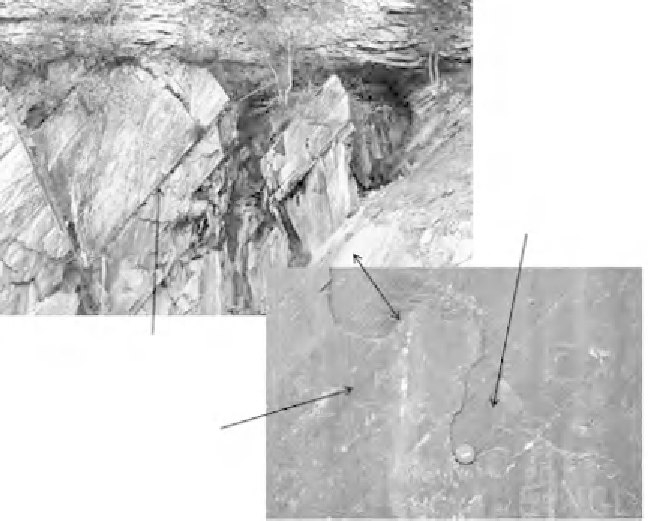Geology Reference
In-Depth Information
increasing use of Osterberg-type jacks embedded in large-diameter
bored piles will no doubt provide very useful data in the future for
assessing deformability of rock masses and this, combined with sophis-
ticated numerical modelling, is allowing re
nements to the empirical
approaches currently in use.
5.7.1 General
The majority of rocks, and some soil masses near the Earth
s surface,
contain many discontinuities and these dominate mass properties,
including strength, deformability and permeability. Discontinuities
include bedding planes, cleavage, lithological boundaries, faults and
joints. The origins, nature and development of discontinuities are
discussed in detail in
Chapter 3.
For the rest of this discussion, I will
discuss joints but this is generally relevant to other discontinuities.
Many joints are initiated geologically as incipient weakness directions
and only with time do they develop as full mechanical discontinuities,
as illustrated in
Figure 5.18
and discussed by Hencher &Knipe (2007).
In this
'
figure, the incipient cleavage in the slate below the unconformity
with the Carboniferous Limestone generally has cohesion almost as
high as the rock orthogonal to that cleavage direction. Nearby, how-
ever, cleavage and bedding has opened up due to exposure and
Figure 5.18
Variable
development of
cleavage and
mechanical
discontinuities.
Horton in
Ribblesdale, West
Yorkshire, UK.
Incipient
discontinuities
(cleavage)
Mechanical, 'infilled'
discontinuity
Mechanical
discontinuity
(facing arrow)

